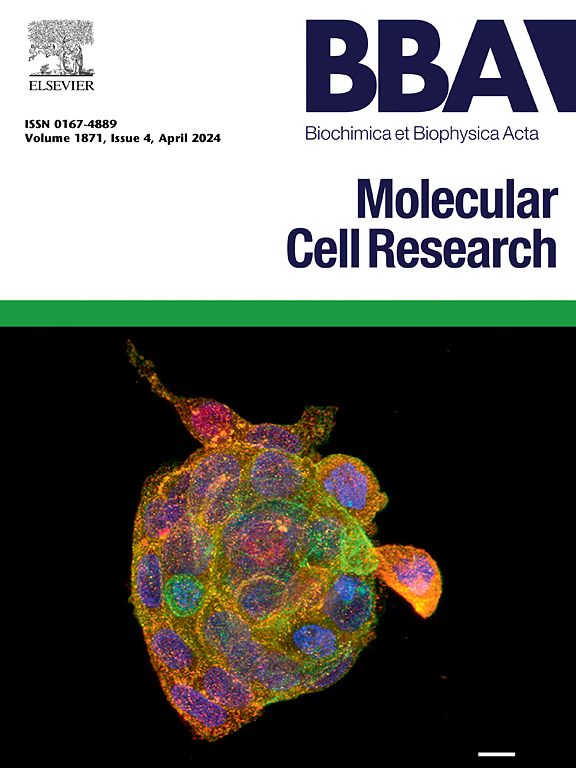Deubiquitinases in metabolic diseases, fibrosis and cancer of the liver
IF 3.7
2区 生物学
Q1 BIOCHEMISTRY & MOLECULAR BIOLOGY
Biochimica et biophysica acta. Molecular cell research
Pub Date : 2025-07-11
DOI:10.1016/j.bbamcr.2025.120021
引用次数: 0
Abstract
Obesity is a key driver of the progression from metabolic dysfunction-associated steatotic liver disease (MASLD), to metabolic dysfunction-associated steatohepatitis (MASH), liver fibrosis, and hepatocellular carcinoma (HCC). Excess adiposity and elevated circulating fatty acids disrupt metabolic, inflammatory, and signaling pathways, creating conditions permissive for hepatic injury, inflammation, fibrogenesis, and carcinogenesis. One of the mechanisms that regulates these pathways is ubiquitylation, a post-translational modification that controls protein degradation and cellular signaling. Deubiquitinases (DUBs) counterbalance this process by removing ubiquitin chains, thereby maintaining cellular homeostasis.
This review examines the role of DUBs in obesity-induced MASLD progression, focusing on how dysregulated DUB expression affects insulin signaling, lipogenesis, inflammation, and oxidative stress. While DUBs have been extensively studied in cancer and metabolic syndrome, their therapeutic potential in obesity-related MASH, liver fibrosis, and HCC has not been fully explored.
By synthesizing clinical and experimental evidence, we highlight DUBs as promising precision medicine tools for both patient stratification and therapeutic intervention. This review emphasizes the critical need for further translational research to develop DUB-targeted strategies for early intervention in MASLD progression.

去泛素酶在代谢性疾病、纤维化和肝癌中的作用
肥胖是代谢功能障碍相关脂肪性肝病(MASLD)发展为代谢功能障碍相关脂肪性肝炎(MASH)、肝纤维化和肝细胞癌(HCC)的关键驱动因素。过量的脂肪和升高的循环脂肪酸会破坏代谢、炎症和信号通路,为肝损伤、炎症、纤维化和癌变创造有利条件。调控这些途径的机制之一是泛素化,这是一种控制蛋白质降解和细胞信号传导的翻译后修饰。去泛素酶(DUBs)通过去除泛素链来平衡这一过程,从而维持细胞稳态。这篇综述探讨了DUB在肥胖诱导的MASLD进展中的作用,重点关注DUB表达失调如何影响胰岛素信号、脂肪生成、炎症和氧化应激。虽然DUBs在癌症和代谢综合征方面已被广泛研究,但其在肥胖相关的MASH、肝纤维化和HCC方面的治疗潜力尚未得到充分探索。通过综合临床和实验证据,我们强调dub是有前途的精准医学工具,用于患者分层和治疗干预。这篇综述强调,迫切需要进一步的转化研究,以制定针对dub的MASLD进展早期干预策略。
本文章由计算机程序翻译,如有差异,请以英文原文为准。
求助全文
约1分钟内获得全文
求助全文
来源期刊
CiteScore
10.00
自引率
2.00%
发文量
151
审稿时长
44 days
期刊介绍:
BBA Molecular Cell Research focuses on understanding the mechanisms of cellular processes at the molecular level. These include aspects of cellular signaling, signal transduction, cell cycle, apoptosis, intracellular trafficking, secretory and endocytic pathways, biogenesis of cell organelles, cytoskeletal structures, cellular interactions, cell/tissue differentiation and cellular enzymology. Also included are studies at the interface between Cell Biology and Biophysics which apply for example novel imaging methods for characterizing cellular processes.

 求助内容:
求助内容: 应助结果提醒方式:
应助结果提醒方式:


